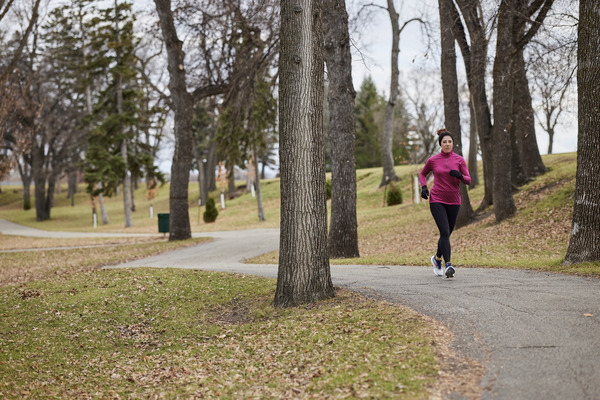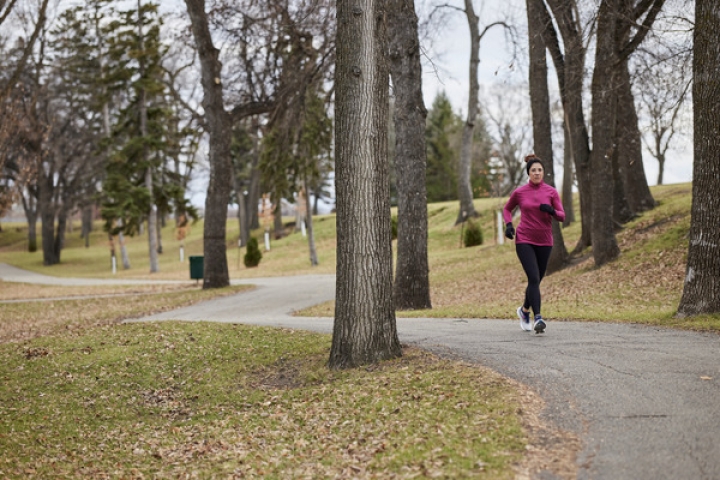What is Zone 2 Cardio?
There are many kinds of cardio workouts, but they all have one essential element in common: They get your heart pumping. In fact, the term "cardio" is derived from "cardiovascular," which reflects its primary function of raising your heart rate. However, cardio workouts also increase your breathing and blood flow. Over time, this helps to enhance your body's aerobic capacity—its ability to use oxygen more efficiently during exercise.
What is Zone 2 Cardio?
The intensity at which you get your heart pumping defines the zones. Zone 1 is the slowest, which makes Zone 5 (you guessed it!) the highest. Determining your personal zones begins by identifying your maximum heart rate. According to the Cleveland Clinic1, your maximum heart rate is 220 minus your age. So, for example, at age 30, your maximum heart rate would be 190 bpm (beats per minute).
Zone 2 corresponds to 60%-70% of your maximum heart rate. You can calculate this by multiplying your maximum heart rate by 0.6 for the low end and by 0.7 for the high end.1
Knowing which zone you're working in is crucial as it also reveals what you're using for energy. As your heart rate increases through the zones, you burn more carbohydrates and proteins and less fat.2
Why Should Someone Do Zone 2 Cardio?
Zone 2 cardio, also known as “base cardio,” is generally a good starting pace, and one many people return to during their exercise routines. It’s typically a steady effort that you can maintain while talking intermittently with friends or singing along to your music. Zone 2 is a step up from a stroll, more like a gentle jog.
In Zone 2, your body is fueling itself with about 65% fat and only 35% carbs and protein.2 It’s also a crucial part of endurance training, since you should ideally be able to maintain it for long periods.
Another benefit of Zone 2 cardio is its health impacts. A 2003 study3 found that moderate exercise training for three months decreased blood pressure and heart rate, and improved the heart's ability to adapt to changing circumstances and needs.
In short, Zone 2 cardio helps you burn fat and build your body’s fitness, regardless of the type of exercise you prefer.
Ways to Do Zone 2 Cardio
Fortunately, there are many options for getting your heart into that key Zone 2 range. Prime examples include:
- Cycling—There’s no set speed or distance that works for everyone; push yourself just a little and check your pulse to stay in the zone4
- Jogging—A steady pace with a low-to-moderate, sustainable effort5
- Rowing—A low-intensity workout that raises your heart rate just a bit6
- Rollerblading or roller skating—A low-impact method that is easy to maintain in the Zone 2 sweet spot with a lower chance of pushing too hard7
- Swimming—A moderate, sustainable pace, making it another excellent choice for getting your heart pumping without worrying about overdoing it8
- Pickleball—This game’s fun, social pace may be just what you need for your Zone 2 cardio!
Walking does not typically count as Zone 2 cardio, but jogging does. Remember, it should elevate your heart rate to 60-70% of your maximum range but still be low-fatigue. Zone 2 shouldn’t cause difficulty in catching your breath. If you can't chat a bit with your workout partners, you’ve probably pushed up into Zone 3 or 4.2
Supplements to Pair with Zone 2 Cardio
As always, when undertaking an exercise routine, check with your doctor. Also, ensure you care for your body both before and after the workout. Here are a few ideas from our experts at BubbForest:
Pre-Workout Supplements
Ramp up your energy with pre-workout boosters, such as l-carnosine, beta-alanine, nitric oxide and caffeine, available in capsule and powder formats.
Hydration & Electrolytes
Hydrate and refresh with plenty of water, plus special hydration supplements packed with vitamins and minerals necessary for electrolyte replenishment.
Protein Supplements
Fuel your routine with protein capsules and powders in a variety of delicious flavors.
Remember, a well-executed Zone 2 cardio workout will help you achieve that optimal heart rate, improve cardiovascular health, burn fat efficiently, and enhance your overall fitness. That’s the benefit—and joy—of Zone 2 cardio.
You be well, now.
BubbForest
*These statements have not been evaluated by the Food and Drug Administration. These products are not intended to diagnose, treat, cure, or prevent any disease.
About Dawn Zink, Certified Fitness Instructor
Dawn Zink has been with BubbForest for more than eight years and is a fitness instructor with certifications in BodyPump™, RPM™, Sprint™, and The Trip™ through Les Mills™. She has been coaching and instructing fitness classes for over ten years, with a particular love for HIIT training.
Sources
- Heart Rate. Read source
- Heart Rate Zones Explained. Read source
- Dose-Response Relationship of the Cardiovascular Adaptation to Endurance Training in Healthy Adults: How Much Training for What Benefit? Read source
- Zone 2 training is Key for Longer, Faster Rides—Here’s how to Execute it. Read source
- A Beginner’s Guide to Zone 2 Running: What Is It and How to Start. Read source
- Get Fit by Rowing. Read source
- Can Roller Skating or Rollerblading Benefit Runners? Read source
- Use Heart Rate Training Zones to Improve Your Swim Training. Read source





Leave a comment